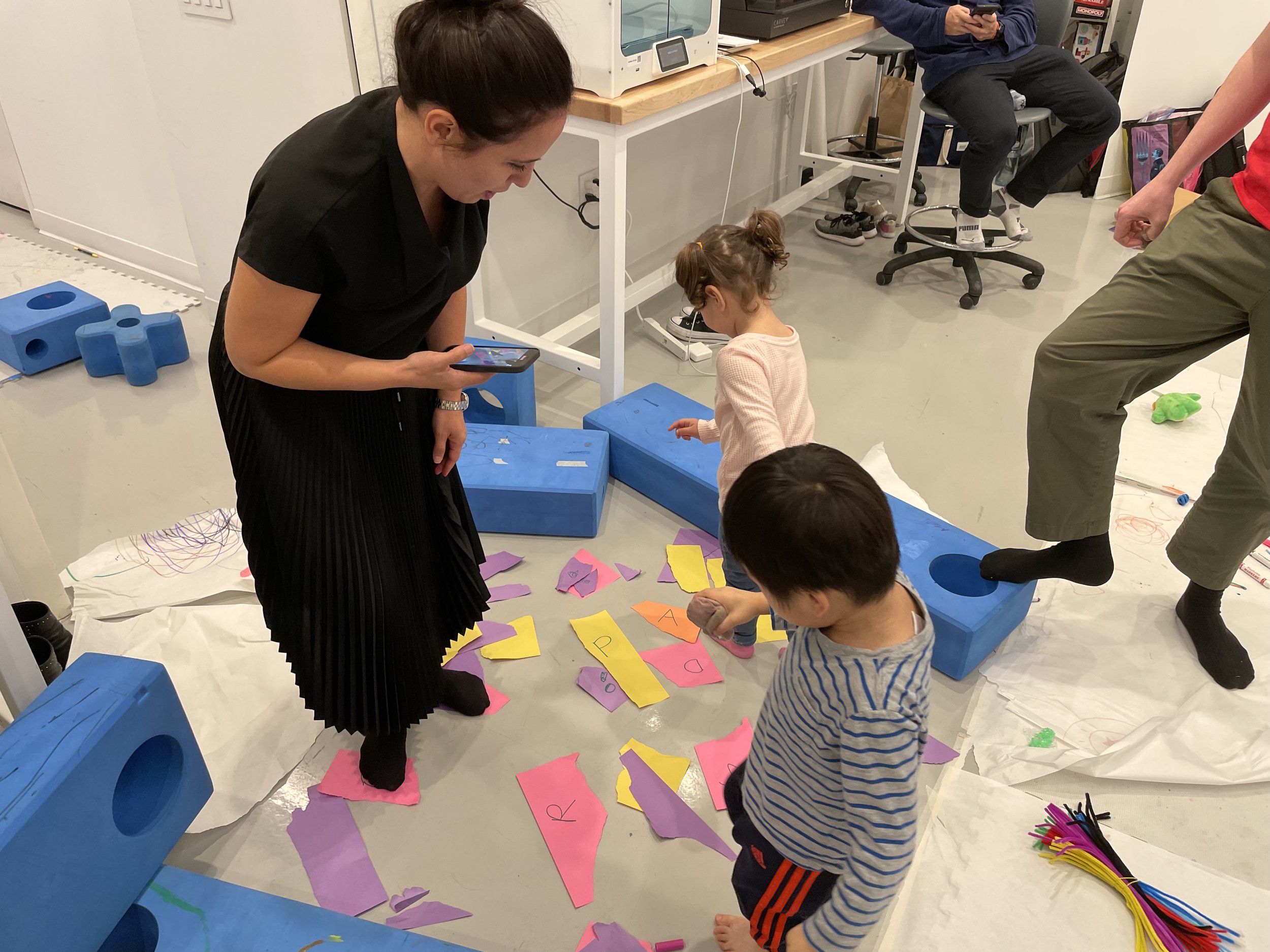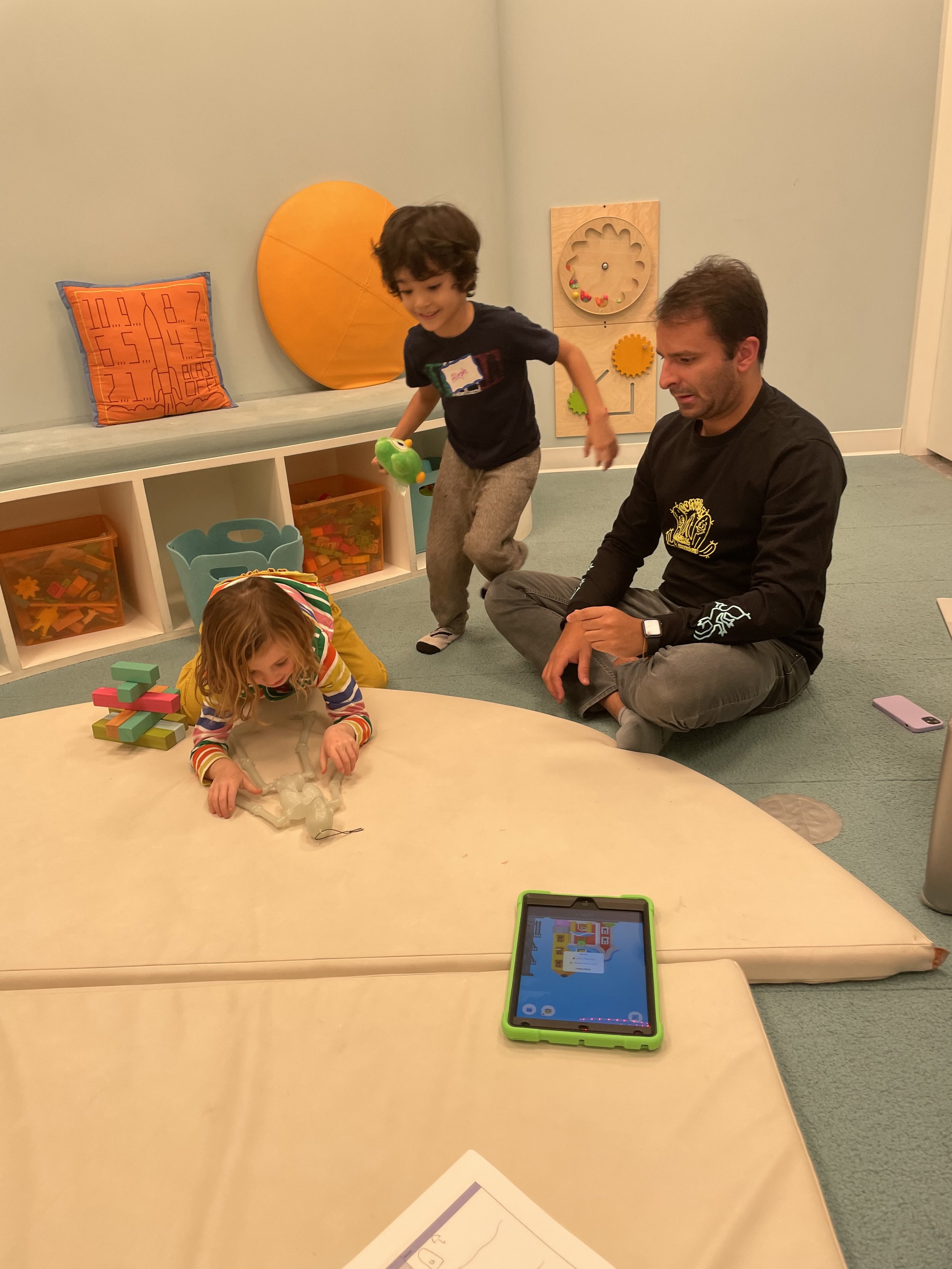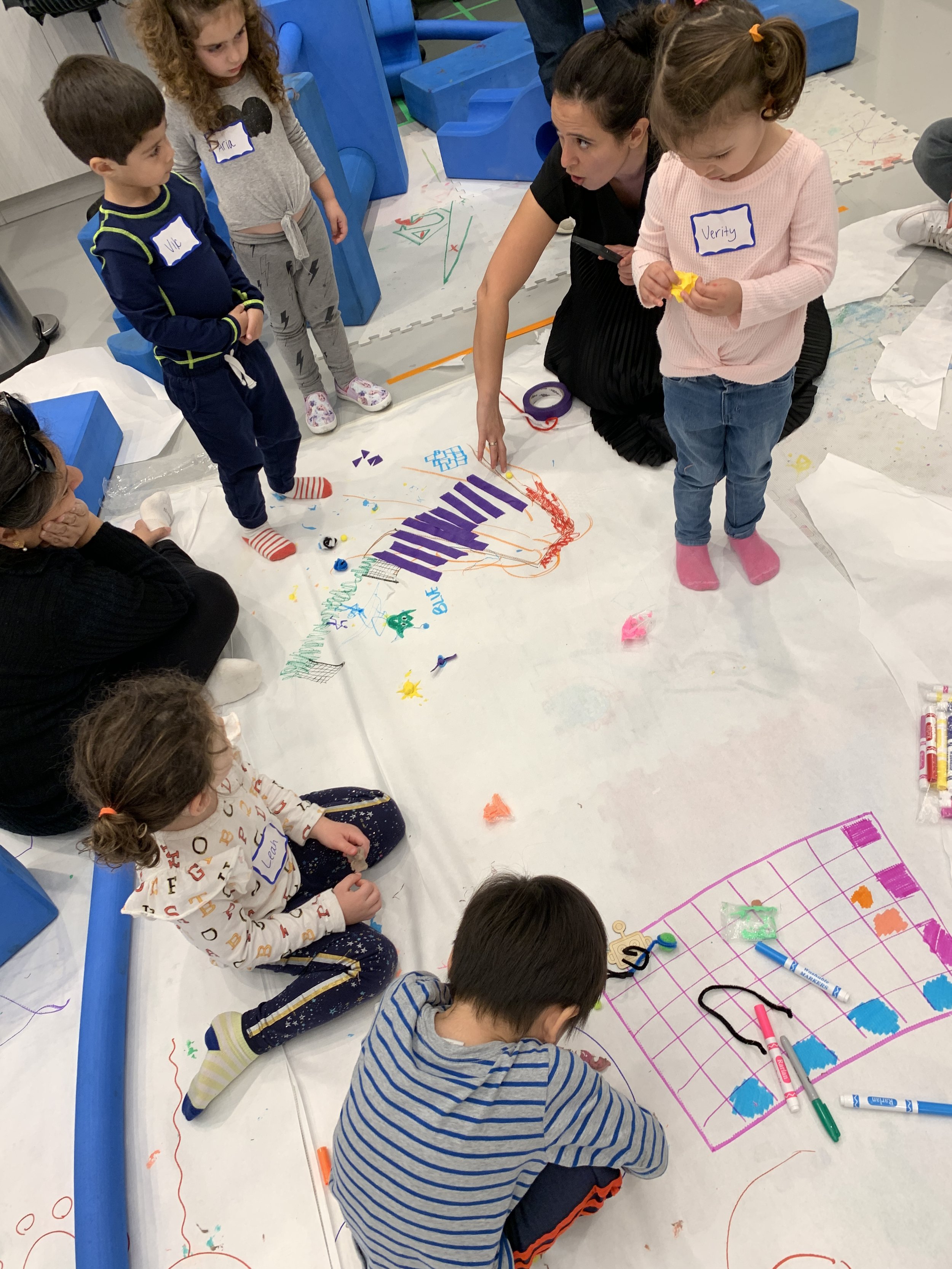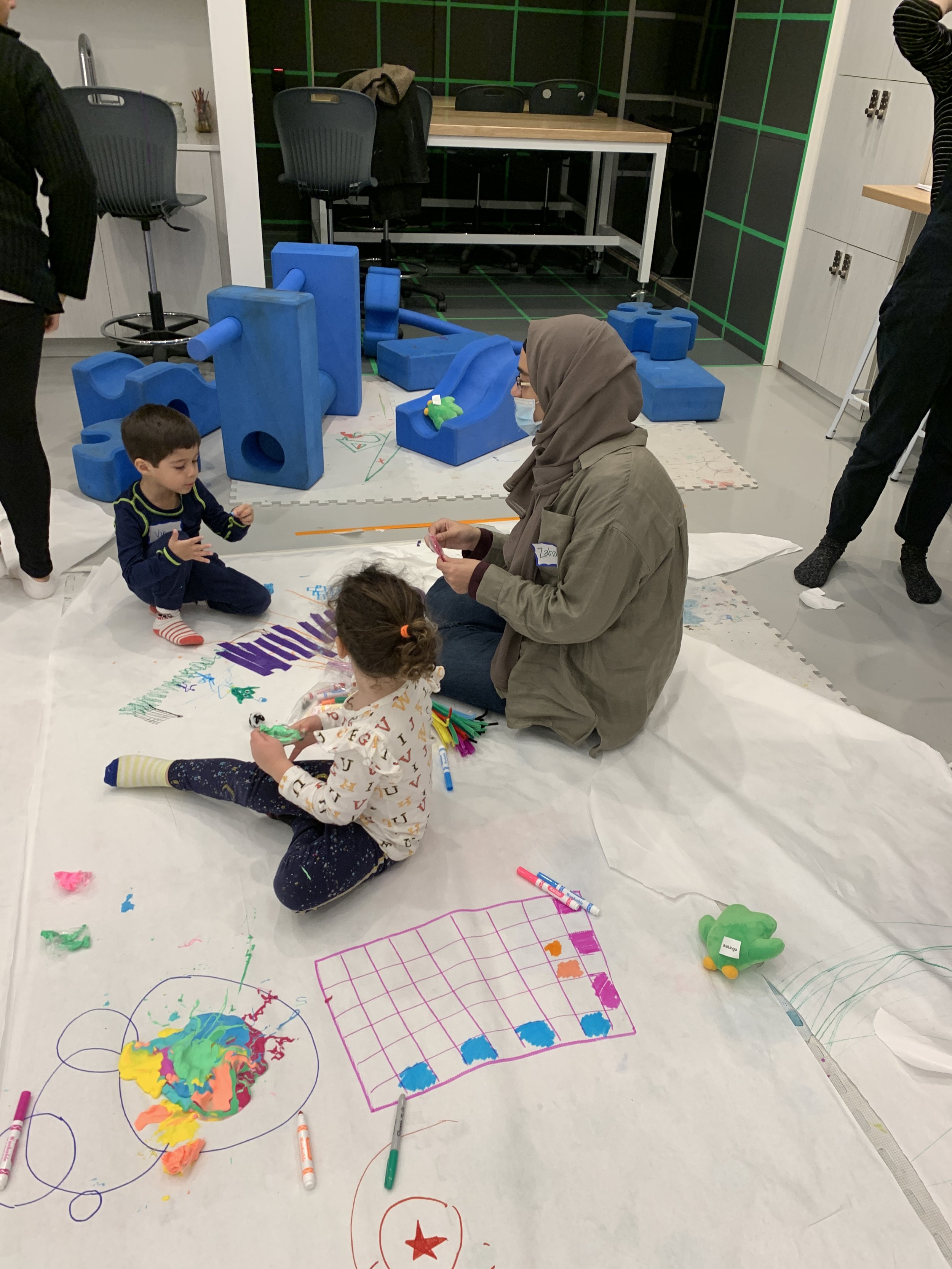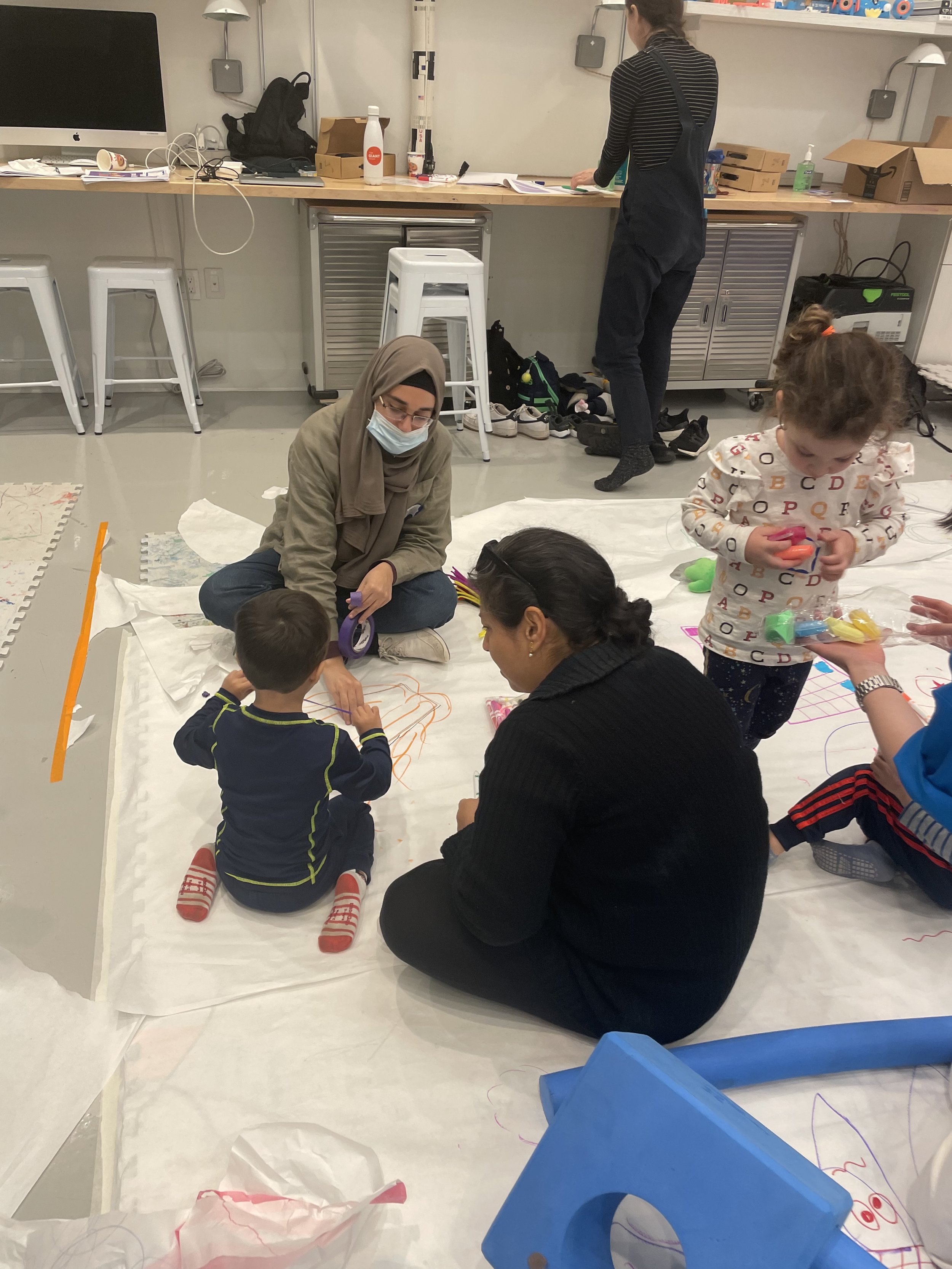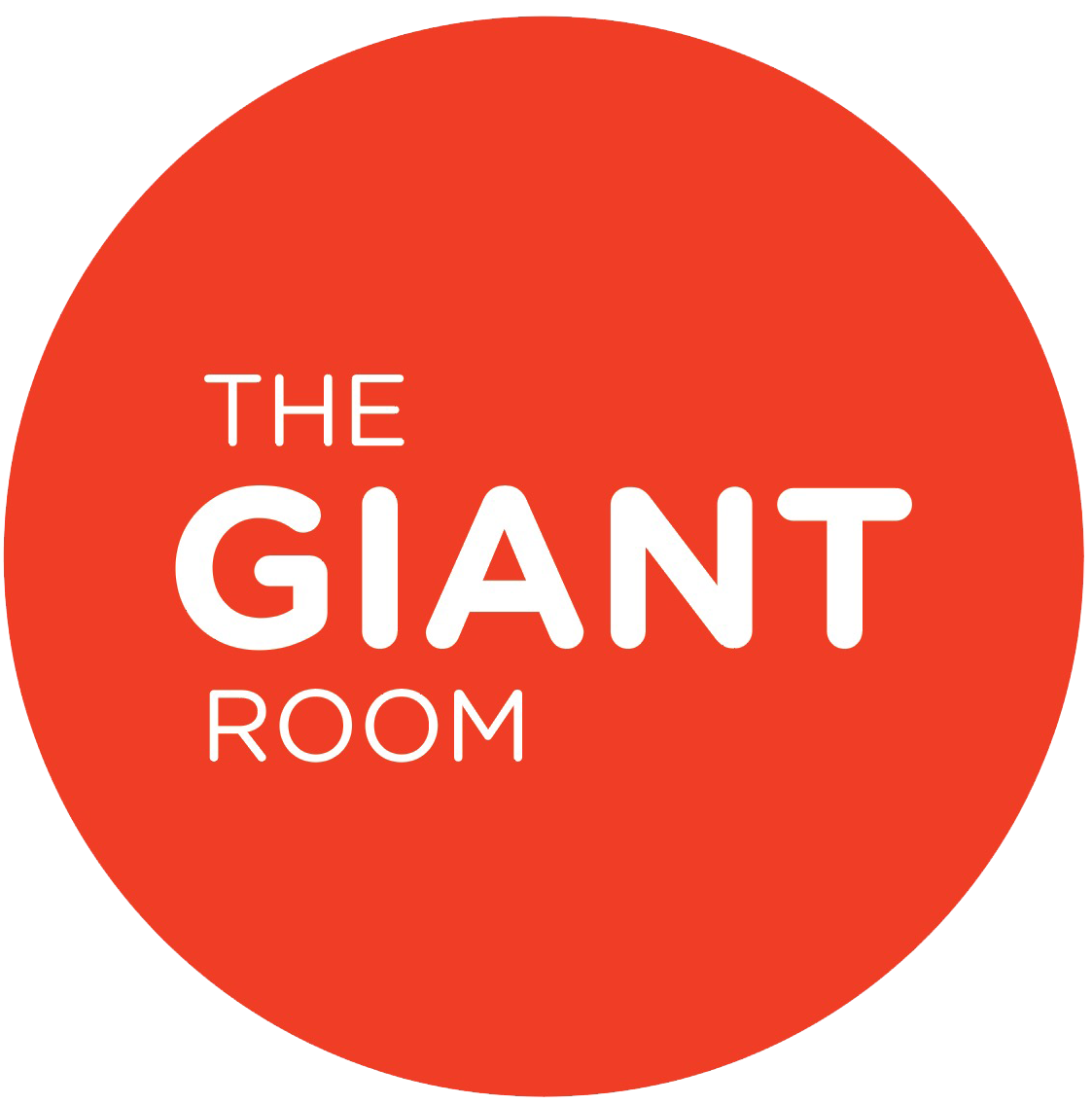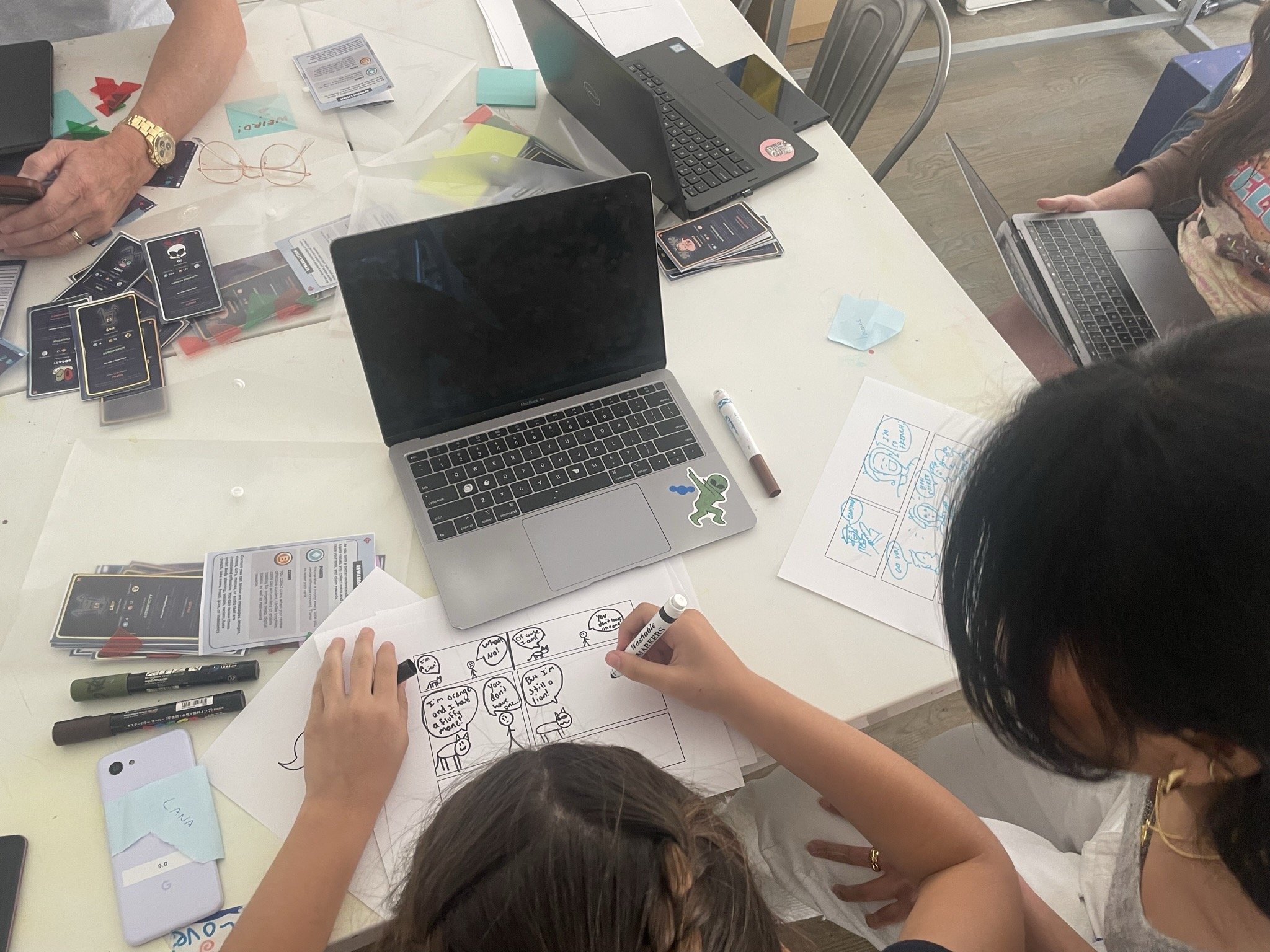Report: Duolingo ABC Playtesting & Prototyping Series at GIANT
Duolingo ABC team joined one of our partner locations for two sessions of playtesting and prototyping. These sessions were designed to bring together diverse groups of GIANT preschoolers with researchers and designers from the Duolingo ABC team. The goal was for kids to interact directly with the Duolingo ABC team, play with their new set of literacy apps, engage in exchanging design ideas, provide feedback for the team, and build prototypes of their own ideas.
INDUSTRY PARTNER
PRODUCT
Duolingo ABC app
PRODUCT DEVELOPMENT STAGE
Beta Prototype
RESEARCH & DESIGN METHODS
-
Designers and/or researchers invite kids to play with a prototype of the product they are in the process of developing. The goal is to understand “what do users do?” (behavioral) and “what do users think?” (attitudinal). In general, playtesting is done in combination with at least one other R&D method, such as observation and note taking, interviewing, task analysis, video analysis, etc.
-
In response to a design prompt provided by the adult designers and researchers: kids ideate, make a prototype of their ideas, and share with other participants in the session. The prompts are designed to help adult designers learn more about kids' preferences, interests, and play patterns in which they are interested. These prompts can also be open-ended and/or related to the particular product the designers are developing.
PARTICIPANTS
Ages: 3 to 6 years old
Number of participants: 11
FORMAT & SETTING
In-person
2 Sessions
GIANT Partner Location
Background
Duolingo ABC team joined The GIANT Room for two sessions of playtesting and prototyping. The goal was for the Duolingo ABC team to interact directly with preschoolers, observe them as they played with their new set of literacy apps, and engage them in exchanging design ideas and feedback. Researchers from Joan Ganz Cooney Center also volunteered their time by participating in one of the sessions. The volunteers supported by designing the program and facilitating post-study communications and strategies.
The Big Question
Usability: Are there any usability issues or confusing aspects of the UX that may prevent kids from being able to play and learn with the app?
Engagement: Is the experience engaging and fun? What makes an interactive experience “fun” for kids? (How might we design future lessons based on this?)
Design Features: How well, if at all, does the experience adhere to the Duolingo ABC design principles?
Learning: Are kids still learning from the learning content? / Are they paying attention to the learning content (e.g., are they not distracted)?
Process
The Duolingo ABC team of researchers and designers joined us in person at one of our partner locations in New York City to playtest a suite of new literacy games for preschoolers, and together, with the kids, prototyped new design ideas for these games. We ran a total of 2 sessions with 11 preschoolers in total. Each session started with a round of introductions and a warm-up activity to help kids feel comfortable with the adults in the room. Each child was then paired with one researcher to playtest three games. A number of designers rotated between stations, observing kids as they played and interacted with the researchers. While children were playing the games on the iPad, researchers took careful notes and recorded observations on a predefined rubric. After the gameplay, the researchers interviewed each child about their play experience. In addition to observation and interview notes, each child’s gameplay was video recorded and their iPads’ screens were captured. The last 30 minutes of the session were dedicated to kids ideating, prototyping, and sharing ideas for the next iteration of the product. After these sessions, the GIANT team of researchers analyzed all data (observation notes, interviews, recorded videos, and screen captures) and provided a comprehensive report addressing Duolingo ABC’s research questions. In addition, the GIANT team provided a series of specific recommendations based on the findings.
The findings of the study are confidential; however, we have included a number of highlights from the session in the following part of the report.
Key Findings & Recommendations
-
Some kids had a hard time just tapping on choices during the gameplay. They would tap with a slight drag in which case the game wouldn’t register their gesture as tapping.
Recommendation: When designing for preschoolers, we recommend accepting the “tapping + small dragging” gesture as a “tapping” gesture for user input.
-
Unexpected silliness and jokes in which the kids could relate made our kid participants big fans of one of the games in particular. However, children who found the learning content too difficult didn’t necessarily engage with the learning content, and they simply just tapped on choices to progress through the game and get to the fun part.
Recommendation: A little silliness that kids can relate to goes a long way, but in order to ensure engagement with the learning content, keep the difficulty level at the zone of proximal development for the users.
-
Children showed much more enthusiasm for games with a context compared to the one without any particular theme or context. They ranked the games that had narratives higher than the one without any narrative, and they remembered more about their gameplay when they could connect to the narrative. In addition, when asked to make prototypes of their own ideas for new games they like to play, they made a pizza shop, a big bird in hunt for food, volcano in a soccer field, lava floors, magic wands, and a house for a caterpillar family!
Recommendation: When designing learning games for preschoolers, try to incorporate themes/contexts they like to play with in real life. You may also combine two unrelated themes to add an element of surprise. Volcanoes on a soccer field? Why not?!
-
Apps that engage kids in solving four to five problems, and then break into another screen with a fun element seem to truly engage younger kids. Examples of apps that have implemented this formula are a number of Sago Mini apps, Tiggly Chef (by far the most popular app designed by the company), and Sesame Street Alphabet Kitchen (Cookie Monster part).
Recommendation: Provide opportunities for “fun” breaks after 4 to 5 rounds of problem solving in games for preschoolers.
Impact on Product Design
Being around kids all at once in a space, plus seeing multiple kids play Duolingo ABC lessons at the same time, is not only efficient but also helps the team members feel more connected to kids and understand their experiences with the app (by seeing it for themselves)!
The Duolingo ABC team shared that some of the findings of the study were truly “eye-opening” for them and helped them to identify areas in which they need to invest and areas in which they need to improve.
The Duolingo ABC team found the feedback and recommendations provided in the final report very helpful as they’re planning for the next phase of their product development for preschoolers.
Impact on Kids
Kid participants engaged in reading and spelling age-appropriate vocabulary, practiced sounding out letters and words and showed signs of improvement in correlating sounds with letters.
Kids love to meet and interact with real designers who actively design products that allow them to play and learn. As they interact with the designers, share ideas, co-play, and co-create with them, not only do they develop their creative confidence but also practice design thinking, collaboration, and the art of giving and receiving feedback.
As kids interact with designers and learn about the behind-the-scenes of real products, they trust more about their own design process, will become more forgiving of their own failures, and start internalizing that prototyping, testing, and refining their designs are necessary steps to bring their ideas into the world.
Interactions and engagements with designers amplify kids' voices, needs, interests, and perspectives in the design process of products that may touch millions of other kids when these products enter the market.
Credits
A GIANT thank you to kids and adults who participated in this session, generously shared their ideas and feedback, and contributed to the design and development of Duolingo ABC!
Kid Participants:
Vik, Verity, Sebastian, Aria, Leah, Mia, Dylan, Kai, Alice, Audrey, and Aleph
Adult Participants:
Azadeh Jamalian, PhD (The GIANT Room)
Hongjin Du (The GIANT Room)
Sam Irwin (The GIANT Room)
Zahar Al-Dabbagh (The GIANT Room)
Collaborate with GIANT
Is your company designing and developing a product for kids? Reach out to us to learn more on ways The GIANT Room’s team and GIANT kids can support you in your research and development efforts. From recruitment and space for conducting research, to designing a robust research program based on the stage of your product development— including facilitation, data collection and analysis, reports, executive summaries, and experience/play design consulting; we’re here to support.



